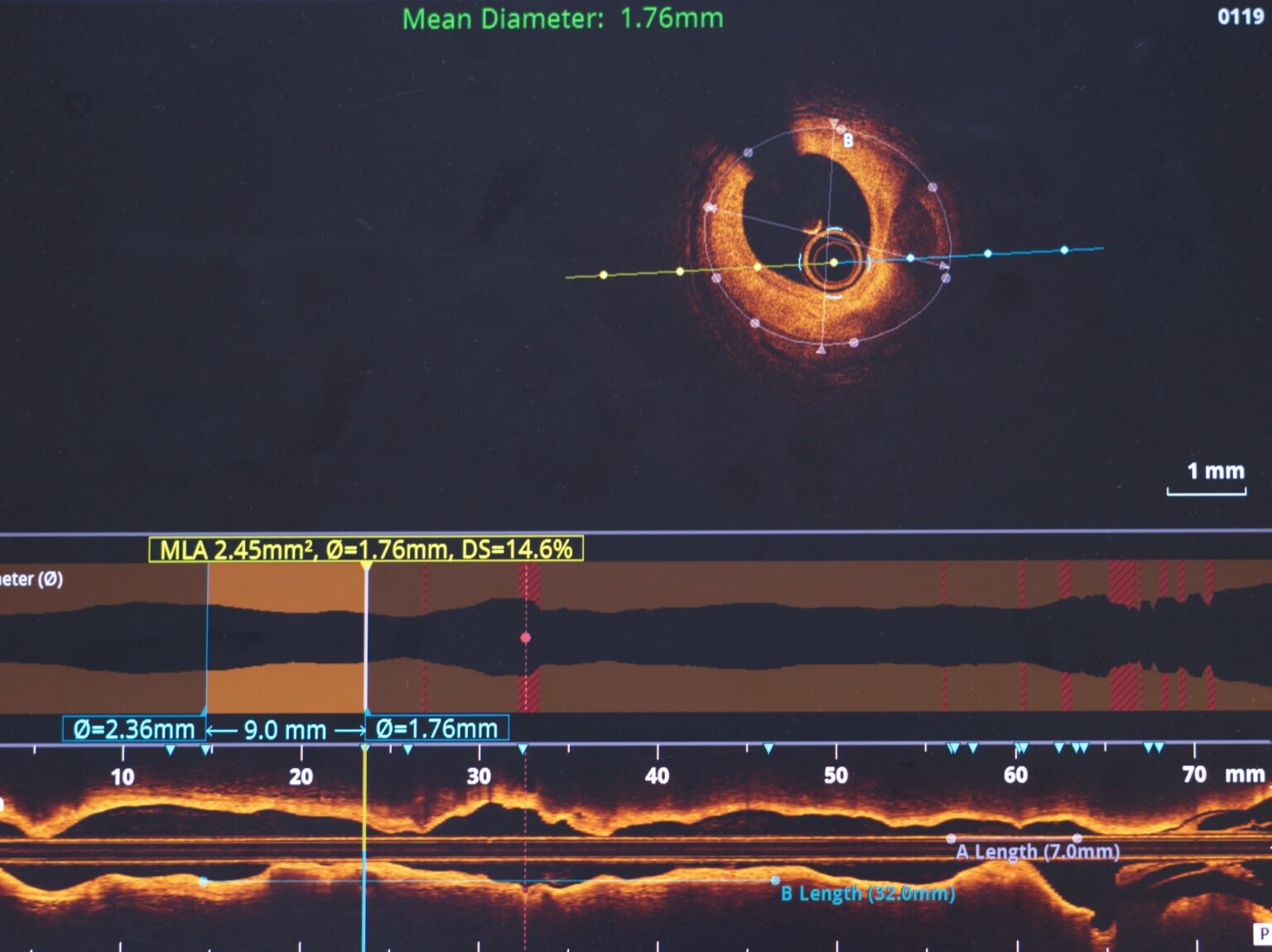Glaucoma

What is Glaucoma?
Glaucoma is a group of eye conditions that can cause damage to the optic nerve, potentially leading to permanent vision loss if left untreated. At Carolina Cataract & Laser Center, our experienced glaucoma specialists are dedicated to providing comprehensive glaucoma diagnosis and treatment options to help preserve your vision.
Glaucoma is a group of eye conditions that can cause damage to the optic nerve, which is responsible for transmitting visual information from the eye to the brain. This damage is often caused by increased pressure within the eye, known as intraocular pressure, or IOP.
The increased pressure often happens when the fluid in the eye, called aqueous humor, does not drain properly. This fluid is constantly produced and circulated inside the eye, nourishing the tissues.
If the drainage channels become blocked or the eye produces too much fluid, the pressure within the eye can rise to harmful levels. If left untreated, glaucoma can lead to permanent vision loss.
What Are the Different Types of Glaucoma?
If you are diagnosed with glaucoma, your eye doctor at Carolina Cataract & Laser Center will determine what type of glaucoma you have to help create an effective treatment plan. There are several types of glaucoma, including:
Open-Angle Glaucoma
Open-angle glaucoma is the most common form of glaucoma. In this type of glaucoma, the drainage angle in the eye remains open, but the trabecular meshwork, which is the eye’s drainage system, becomes clogged over time, causing increased IOP.
Angle-Closure Glaucoma
Angle-closure glaucoma occurs when the iris bulges forward, narrowing or blocking the drainage angle and causing a rapid increase in IOP. This type of glaucoma can cause many symptoms, including eye pain, headache, and blurry vision.
Angle-closure glaucoma typically comes on fast and can cause rapid vision loss if left untreated. If you experience symptoms of angle-closure glaucoma, it is important to visit your eye doctor right away.
Normal-Tension Glaucoma
It is also possible to have glaucoma with normal eye pressure. Normal-tension glaucoma is a type of glaucoma in which optic nerve damage occurs even though a person has normal eye pressure levels.
What Are the Symptoms of Glaucoma?
In most kinds of glaucoma, there are no symptoms in the beginning stages of the condition. Your vision may stay normal, and there is often no pain associated with most types of glaucoma.
However, as the condition gets worse, you may begin to lose your side vision. Objects straight ahead may be clear, but objects to the side might be blurry or missing.
When glaucoma is left untreated and significantly advances, the field of vision narrows, and the central vision is affected. Since most types of glaucoma do not present many symptoms, regular eye exams are essential so your eye doctor can detect glaucoma early and develop a treatment plan before permanent vision loss occurs.
How is Glaucoma Diagnosed?
Glaucoma is found most often during a dilated eye exam. If your eye doctor suspects you may have glaucoma, they will have you return to the office for a series of tests to determine for certain that you have the condition, and measure its severity, including:

What are the Risk Factors for Glaucoma?

Several factors can increase your risk of developing glaucoma, such as:
What are the Treatment Options for Glaucoma?
All treatment options for glaucoma aim to lower eye pressure and prevent further damage to the optic nerve. Your eye doctor will determine the best treatment for you based on the type and severity of your glaucoma.
At Carolina Cataract & Laser Center, our glaucoma specialists offer various treatment options to help control eye pressure and prevent further vision loss.
Eye Drops
Many glaucoma patients can successfully treat glaucoma using medicated eye drops to manage or lower eye pressure. These prescription eye drops or medications work to lower eye pressure by either reducing the amount of fluid produced in the eye or improving fluid outflow.
For most people, regular use of eye drops or medications will control the pressure inside the eye. However, in some cases, they may stop working overtime, or they may cause side effects.
If a problem occurs, your eye doctor may select other medications, change the dose, or suggest other ways to treat your glaucoma.
Laser Treatment
Laser procedures, such as selective laser trabeculoplasty (SLT), can help improve fluid drainage and lower eye pressure. During laser surgery, a beam of light is focused on the part of the eye where the fluid drains, resulting in small changes that make it easier for fluid to exit the internal drain of the eye.
Some people will need both eye drops and laser surgery to control their eye pressure.
Minimally Invasive Glaucoma Surgery
Minimally invasive glaucoma surgeries (MIGS) involve the placement of small devices or the creation of tiny incisions to improve the eye’s natural drainage system. At Carolina Cataract & Laser Center, our glaucoma specialists offer several MIGS procedures, including:
iStent
The iStent Trabecular Micro-Bypass is a tiny device that creates a permanent opening in the trabecular meshwork, the area of tissue responsible for draining aqueous humor from the eye. This can improve the eye’s natural fluid outflow and lower your eye pressure.
The iStent can also be safely implanted during cataract surgery.
Hydrus Microstent
The Hydrus Microstent is another MIGS device that is inserted into the eye’s drainage channel to improve fluid outflow and lower IOP. This tiny, flexible, and biocompatible device is designed to conform to the shape of the eye’s drainage canal.
Doing so helps widen and support the canal, allowing for better fluid drainage and reducing eye pressure. The Hydrus Microstent can also be placed in the eye during cataract surgery.
Goniotomy
This procedure involves making a small incision in the trabecular meshwork to create a new drainage pathway for the fluid, which can reduce eye pressure. This can help lower your eye pressure and prevent further vision loss.
Traditional Glaucoma Surgery
Traditional glaucoma surgery, such as trabeculectomy or tube shunt surgery, creates a new drainage channel for fluid to lower IOP. Traditional glaucoma surgery is typically only used for those whose pressure cannot be controlled with eye drops or laser surgery.


